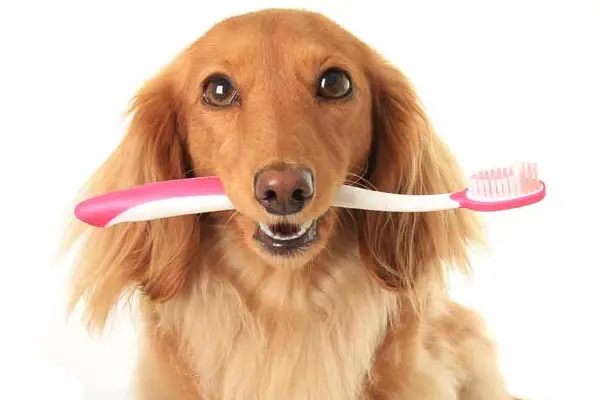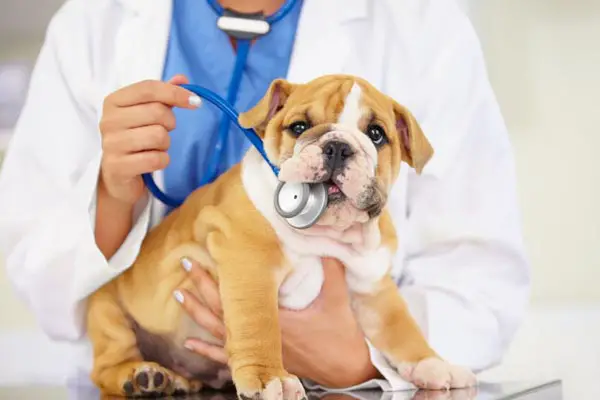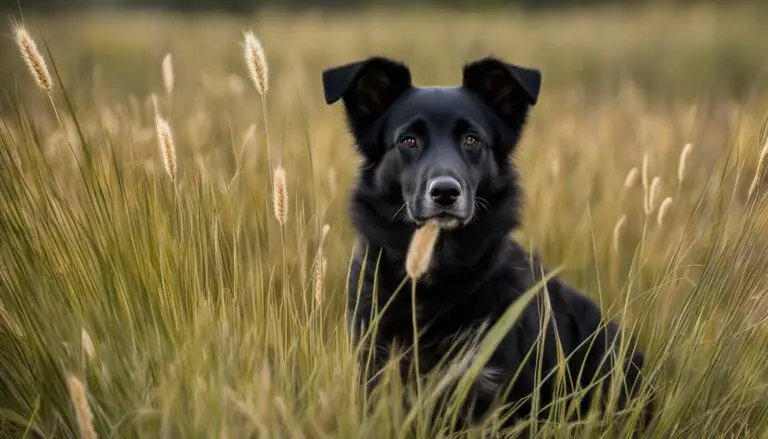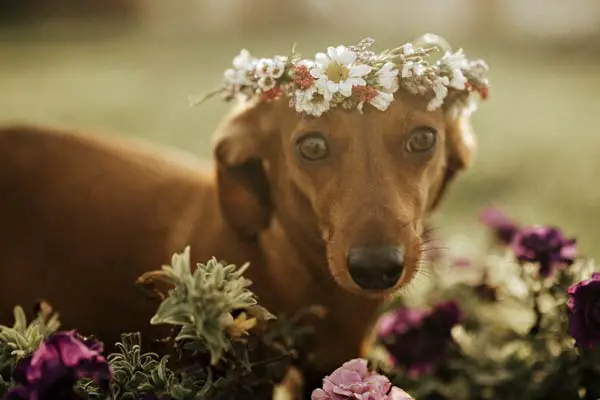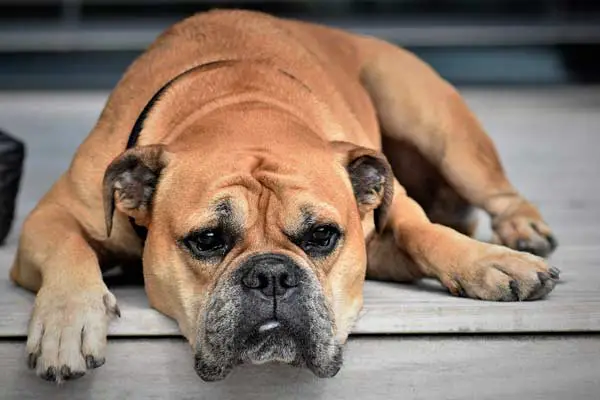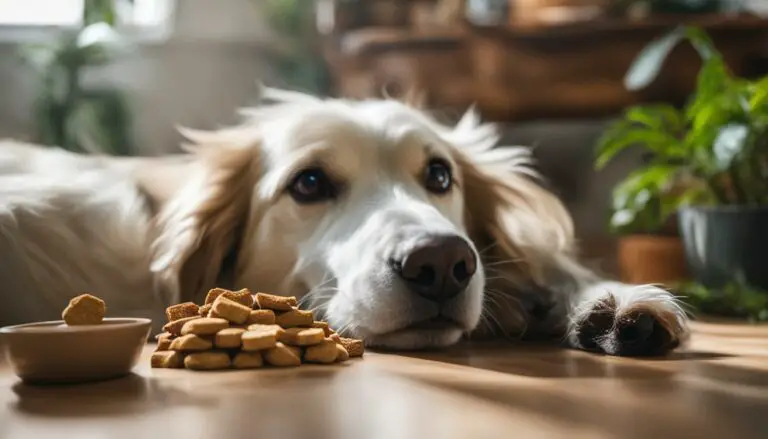Things You Need to Know to Keep Your Dogs Teeth Happy and Healthy
How many teeth do canines have?
According to Pet MD, puppies have 42 permanent teeth while puppies have 28 baby teeth. They have more teeth than both humans and felines.
However, some smaller puppies don’t have the same number as other dogs. Dogs with shorter snouts sometimes have less than 42 teeth.
What types of teeth does your canine have?
Incisors, Canines, Premolars, and molars are the types of teeth your pet has.
The tiny teeth in the fore of your pet’s muzzle are the Incisors. Your dog has six on the top and bottom.
Your canine uses them to tear up meat and when they are searching for ticks and general cleansing.
Canines, also known as fangs, are the long and pointy teeth along the sides of your dog’s jaws. They are designed to rupture the skin or whatever the dog bites on.
Have you ever noticed how your dog can hold onto that toy like crazy when you play tug of war?
They are using their canines to hold onto the toy like crazy. Two canines are on the bottom and on the crown of their mouth.
Your dog’s premolars are behind their fangs. They are sharp-edged which are used for shearing.
Have you ever noticed how your dog eats their treats, bones or chew toys? They are chewing them with their premolars which are located at the side of their jaw.
Your dog has 8 of these on the top and bottom. Your dog’s molars are situated in the rear of their muzzle.
in the very back of its mouth. They are flat surfaced and are usually used for grinding, just like a person’s teeth.
There are 2 molars on each side and on the top and 3 on each side at the bottom for a grand total of 10.
Your shoes or your favorite leather jacket will likely be chewed on by these tough teeth.
When you look at your dog’s teeth, you might notice a rather large one located towards the center of its jaw. This tooth is called the carnassial tooth.
It helps them rip, smash and grip anything they are trying to get their mouth on. This large tooth is why your dog goes through so many chew toys.
When do puppies get their teeth and do they lose their teeth?
Puppies first start growing their teeth when they are 2 weeks old and are done growing their teeth by the time they reach 8-10 weeks old.
The Incisors, Canines, premolars and then the molars tend to come up in that order.
Puppies will lose their baby teeth, also known as “milk teeth” and “deciduous teeth,” when they are roughly 4 months old.
Their adult teeth will start to appear as soon as their baby teeth fall out. There is no set pattern as each puppy is unique.
Typically, the incisors come in around 2 – 5 months, the canine teeth come up around 4-6 months, premolars are about 4 – 7 months and the molars will finally appear around 5-7 months.
When your puppy reaches 7 or 8 months of age, they should have all of their adult doggy teeth.
Teething can be a problem for a puppy, just like a human baby. Teething can hurt for them, but there’s not much you can do to help.
The best you can do for your dog is make sure they have soft, flexible items which are easy to bend. Solid bones are not a good idea for your puppy to play with at this stage.
Just let their teeth fall out naturally, don’t try to pull or force it out in any way.
Occasionally, puppy teeth could stay in place while their adult teeth come up. This can cause complications as the adult tooth won’t be in the same spot which it is supposed to be in.
When this happens, take your pet down to the vet and have them take the puppy tooth out.
My dog lost a tooth what should I do?
If your dog is a puppy, it will lose all 28 of their teeth so there’s nothing to really worry about.
It might not be a bad idea to get its teeth checked just in case it didn’t come out like normal.
If this is the case, you should get your little friend checked out by a vet to prevent infections well before they happen.
You don’t want your dog to develop problems with their teeth while they are a puppy.
If they look like normal, sharp baby teeth when they fall out you shouldn’t worry too much other than a yearly checkup by your professional vet technician.
If your dog is an adult and they lost a tooth, then you have a problem. There are many myths surrounding the canine where they can grow their teeth back. They don’t, just like people.
There are many ways in which your adult dog can lose a tooth, but the biggest problem with dogs losing teeth is from a mouth disease.
The Nest says they can also lose their teeth from a dogfight or getting their heads bumped.
If this happens your dog should be taken immediately as there could be pieces of the tooth still lodged in the gums.
If your dog loses a tooth from playing with a chew toy, this is likely caused by gum problems and should be taken extremely seriously.
Which size breed of canines have more problems with their teeth?
Both sized dogs can get problems, but the problems depend on the size of your pet.
Smaller dogs with tiny jaws and stubby snouts tend to get more plague, tartar verses their longer-nosed cousins.
If this isn’t taken cared of, it will eventually lead to a loose tooth which will be painful for your tiny friend.
Also, don’t let your small dog chew on harder toys as they have a higher chance of chipping or breaking their teeth.
Larger dogs tend to have problems with their tooth tips by getting them chipped. They also can have broken jaws and have the surfaces of their teeth worn.
If the roots of these larger puppies get wind up getting exposed, their tooth could get extreme pain and the tooth will die.
They can also get the same gum and plaque problems just like their smaller family members.
Do dogs get cavities?
Dogs don’t get cavities quite as much as humans, it’s quite rare but it does happen when a tiny piece of food is lodged in their tooth.
They don’t eat sugar in copious amounts like we do. They also have different bacteria in their mouth and their teeth have different shapes.
If your dog does get cavities, they can be fixed the same way as humans. Simply take your pet down to the vet to get their teeth fixed.
How do I know if my dog has gum disease(s)?
It’s pretty simple to check this out. All you need to do is lift your dog’s lips. Teeth which are discolored, dirty or have a brownish-greenish color, go to your vet.
These are imminent signs of tooth problems. Next, check for any escalation or irritation in your dog’s gums or for any blood.
This is another sign of a serious gum problem. While you’re at it, check your dog’s breath.
Dogs generally don’t smell foul, their smell is pleasant or neutral. Again, if your dog’s teeth show any signs, take it to your vet.
Can dogs get mouth cancer?
Sadly, your best friend can get cancer of any kind just like the rest of us humans. According to Dr. Ernie, about 1 in 4 dogs will die of some form of cancer.
Cancerous oral tumors in dogs can spread throughout your pet’s mouth if it goes untreated.
If you can see any lumps, dark colors, swelling or unusual looking colors, get your friend to a vet.
If you get it checked out early enough, your dog could get a much better prognosis than if you catch it afterward.
Can dogs have other tooth problems?
Their other problems your dog can have besides gum disease, cancer, and loss of a tooth.
According to Animal Planet, their jaws or teeth could be crooked or misaligned. If this happens, your little buddy might have difficulty chewing.
You should only fix these problems if it actually hurts the dog, not for aesthetic reasons.
Sometimes a vet could fix these problems simply by removing a problem tooth which eventually can help realign their teeth.
Sometimes an adult dog can get gingivitis, just like people. Check their toys for any signs of blood as this could be a sign of a larger problem.
Just like humans, dogs can also get gingivitis. Some other tooth problems can be infectious.
If this isn’t taken care of, the infection can travel to other organs via the bloodstream.
How many times should I brush my dog’s teeth?
Dogs are fussy creatures when it comes to allowing us to clean their teeth. Some vets say you should brush your dog’s teeth every day but once a week would be more than enough and at least once a month.
If you start cleaning your dog’s teeth while they are puppies, they will tolerate it better as adults as they learn to adapt to it.
While brushing your dog’s teeth, never use human toothpaste, pet stores have toothpaste made specifically for your dog.
You could also make your own toothpaste for your best friend. Simply mix baking soda and warm water together.
You also don’t want to use toothbrushes meant for adult humans, you should get one that is specifically designed for your doggy.
You can use a child’s toothbrush or one which has smaller and softer bristles. You can also wrap gauze around your forefinger and use it to get the paste onto your dog’s teeth.
Follow this great instructional video from youtube, it will show you what to do for your friend.
Introduce toothpaste slowly to your dog since they will not be used to the flavor of toothpaste.
All you gotta do is take a look at their teeth and gums over the course of a couple of weeks.
Use a circular motion rather than the back and forth which we use for ourselves and do so over a 45-degree angle. The faster you can get it done, the better it will be for your puppy.
What else can you do to ensure your dog’s teeth stay healthy?
It’s probably a good idea to get their teeth professionally by a vet technician once every twelve months.
It’s also good to get your dog’s teeth checked by an x-ray to check for any hidden problems.
You should also get special chew treats which can get rid of your canines plaque and tartar buildup.
Make sure they are endorsed by a group called the Veterinary Oral Health Council.
Many of your dog’s treats have special ingredients which can reduce harmful bacteria.
If you can’t get your dog’s teeth brushed, use a special antimicrobial rinse which kills pathogenic bacteria that causes gum infection.
What else can you do to ensure your dog’s teeth stay healthy?
Besides toothpaste and brushes, there are various sprays and gels which could be found online and removes plaque and tartar.
You could also put an additive in their water as a preventative measure for plaque and tartar. Let your dog chew on hard biscuits, hard dry food and toys.
This can help them get buildup off of their teeth. Another way you can help your dog is making sure you’re getting your dog proper nutrition by buying the right dog food for your best friend.
Taking care of your friend’s teeth is extremely important. If you don’t, it could lead to a shortened lifespan and can make it painful for them to eat or play.
